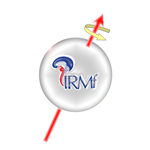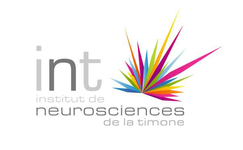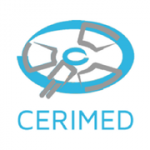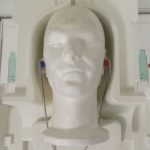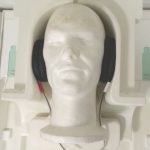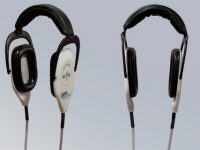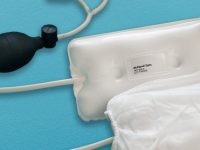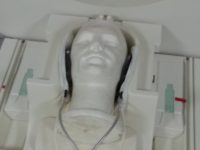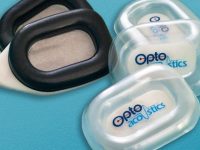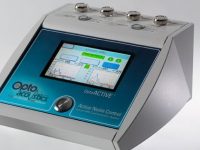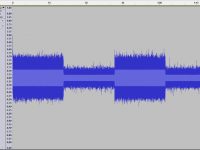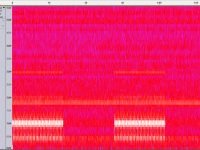The stimulation environment of the MRI Centre includes a complete and modular panel of audio inputs/outputs.
Headsets and hearing inserts
Our platform provides the following auditory stimulation systems:
- Sensimetics S14 earplugs using piezoelectric technology (to use with 64 or 20 channel MRI antennas)
- MR-Confon Optime 1 headphones using electrodynamic technology (to use with the 20 channel antenna) and PI UltraSlim with piezo technology (to use with the MRI antenna with 64 or 20 channel MRI antennas)
- OptoActive Active Noise Cancelling Headset System from OptoAcoustics. The helmet has the correct passive attenuation, reinforced by airbags (pads). Active attenuation is only available on specific acquisition sequences with a reproducible pattern (typically Functional MRI EPI (BOLD) ) where benefit is gained from the timing performed via an MRI Trigger.
The capabilities of the active noise canceller are illustrated in the two images below: the waveform and the spectrogram. The active noise canceller is activated and suspended twice. The signal was recorded from one of the microphones inside the OptoActive headset (one per earphone). It allows you to visualize what the subject is actually hearing.
It can thus be seen that the most attenuated frequency bands are essentially around 1000 Hz (EPI reading gradient) and around 500 Hz.
The player below allows to illustrate the process, in a sound way
Using the headsets
It should be noted that the OptoActive active noise cancelling headset remains fragile (optical technology). It should therefore be used when its characteristics justify it (protocol including audio broadcasting). For “comfort” audio (anatomy, communication with the subject between sequences), the MR-Confon UltraSlim headset is recommended.
Available microphones
The collection of the subject’s speech (and MRI system noise) can be done by means of the following instruments:
- Optoacoustics FOMRI III: optical technology microphon with real-time active noise cancellation
- Sennheiser MO 2000: optical technology microphone with post-hoc noise cancelling
In addition, the experimental console is equipped with a lectern microphone for communication with the subject via one of the above headsets/earphones.
In order to condition these inputs/outputs, we have integrated two audio amplifiers:
- Yamaha P-2075 two-way
ecler eGPA-150 four-way
Finally, an ecler DAM614 digital matrix mixer with 6 inputs and 4 outputs, interfaced via an RS-232 serial link, allows real-time modular routing of various audio sources (sound from the stimulation PC, high-precision analog outputs, experimental microphones, …) to various outputs (headphones, headphones of the subject in the MRI, HP returns from the experimentation console, …).
This environment therefore allows the implementation of particularly complex and demanding protocols in terms of precision and the number of modalities and audio sources to be used.

